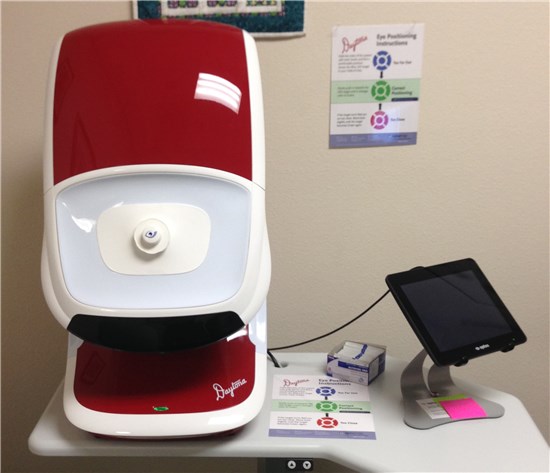Our eye care partners generally include optomap, the only single-capture ultra-widefield retinal image, as part of their standard comprehensive eye exam in order to facilitate early detection from vision impairment, blindness, and other systemic diseases. Retinal imaging elevates the standard of care but often requires patient consent and an out-of-pocket fee. By way of effectively educating the clinical benefits to the added screening, most patients accept the fee. Eric White, OD, explains how his practice has achieved a 90 percent acceptance rate for optomap imaging.
In his practice, Dr. White includes optomap screening as part of the pre-testing process and continues patient education in the exam room while requesting patient approval to review the images. By including the image as a part of the pre-test process, it is a “no-brainer” when its significance is explained. Prior to this method, Dr. White would forego taking the image during pre-testing and would wait until the process was explained in the exam room, if agreed, the patient would then be sent back to the pre-test area for the images to be taken. This was not only inefficient but patients would often rather not go back for yet another pre-test. Once Dr. White implemented this small change, the practice saw a huge increase in acceptance rates for optomap imaging.
For Dr. White, patient education happens before they even step through the door, and he utilizes different means by which he provides details of the optomap imaging process, beginning with their practice website. The site explains the process, how it benefits the patient and the way it aids the doctor in detecting diseases such as diabetes and macular degeneration. Dr. White feels that it is important to fully explain the medical benefit of optomap since there is going to be an out-of-pocket expense associated.
“Explaining the tests you are performing, including high-level testing like the optomap, that come with an out-of-pocket expense, need not add significant time to pre-testing. Our pretest is designed for 20-30 minutes total, of which, the optomap image and the explanation generally take around 30 seconds. For that small amount of time and effort, you get a patient who fully understands the service you are providing–and doesn’t mind paying a little extra for it. When you effectively present the clinical benefits, 90 percent of patients accept the added fee.”
Optos strives to provide our partners with the keys and tools to succeed. We encourage our partners to log into CustomerCentral to access documents that can assist you to increase screening acceptance in your practice. We are committed to solving any questions, quickly and accurately, and assist you to market optomap to your patients. Do you have a success story around optomap utilization in your practice? We want to hear from you, tell us your story today!

